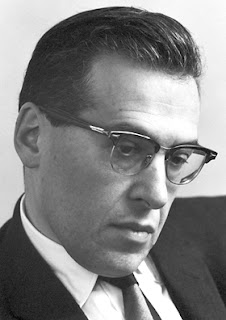By Rodney Brooks
For one hundred years, most people have seen it impossible to understand physics. Examples include Joseph Heller ("writhing in an exasperating quandary over quantum mechanics"), Bill Clinton ("I hope I can finally understand physics before I leave the earth", Richard Feynman ("One had to lose one's common sense"), and even Albert Einstein ("fifty years of pondering have not brought me any closer to answering the question, what are light quanta?).
Julian Schwinger's Insight to Physics
And yet, there is a concept that makes perfect sense and can be understood by any person. This theory, with origins in the 1930s, was ultimately developed by Julian Schwinger, who once had been considered "the heir-apparent to Einstein's mantle". This success occurred many years after Schwinger had already achieved physics fame for solving the "renormalization" problem, defined by the NY Times as "the most important development in the last 20 years" and was duly awarded the Nobel prize.
However for Schwinger this wasn't good enough. He felt that Quantum Field Theory, as it stood then, was still lacking. His target was to integrate matter fields and force fields on an equivalent basis. Following numerous years of hard work, he presented a collection of five papers entitled "The theory of quantized fields" in 1951-54.
Physicists have been combating a particles-vs.-fields battle for over 100 years. There have been three "rounds", beginning when Einstein's concept of light as a particle (called photon) triumphed over Maxwell's perspective that light is a field. Round 2 happened when Schrödinger's hope for a field theory of matter was overcome by the particle-like behavior that physicists could not ignore. And round 3 happened when Schwinger's field-based solution of renormalization was usurped by Feynman's easier-to-use particle based approach.
For that reason, and others, Schwinger's final advancement of Quantum Field Theory, which he regarded as far more important than his Nobel prize work, has been regretfully ignored, and is undoubtedly not known to most physicists-- and to all of the general public.
Nevertheless there are signs that QFT, in the true Schwingerian sense is reemerging, so in this sense it is a "new" theory There have been a number of books and articles, such as "The Lightness of Being" by Nobel laureate Frank Wilczek, "There are no particles, there are only fields" by Art Hobson, and "Fields of Color- The theory that escaped Einstein" by Rodney Brooks. The last one explains QFT to a lay reader, without any equations, and shows how this remarkable "new" theory" resolves the paradoxes of Relativity, Quantum Mechanics and physics that have confused so many people.
Learn more here!

No comments:
Post a Comment